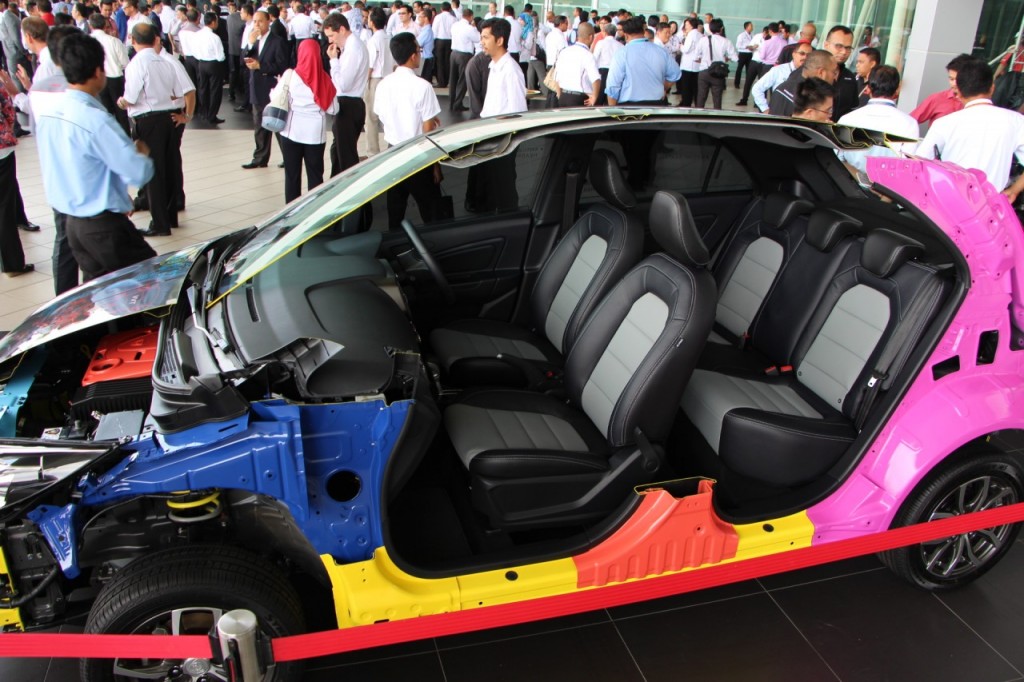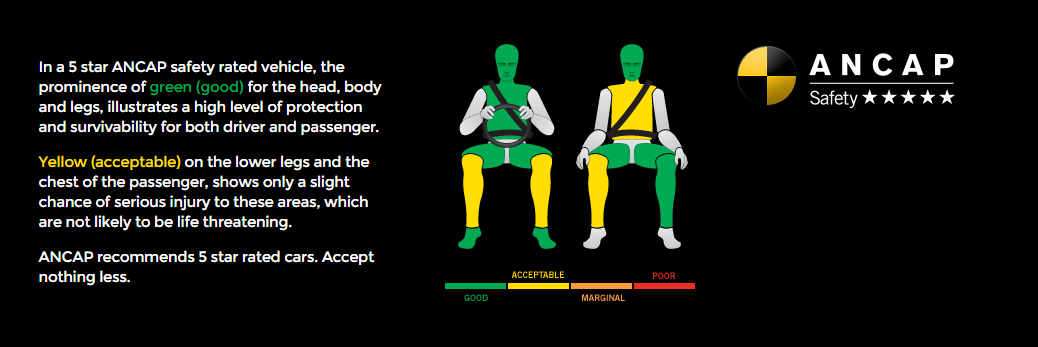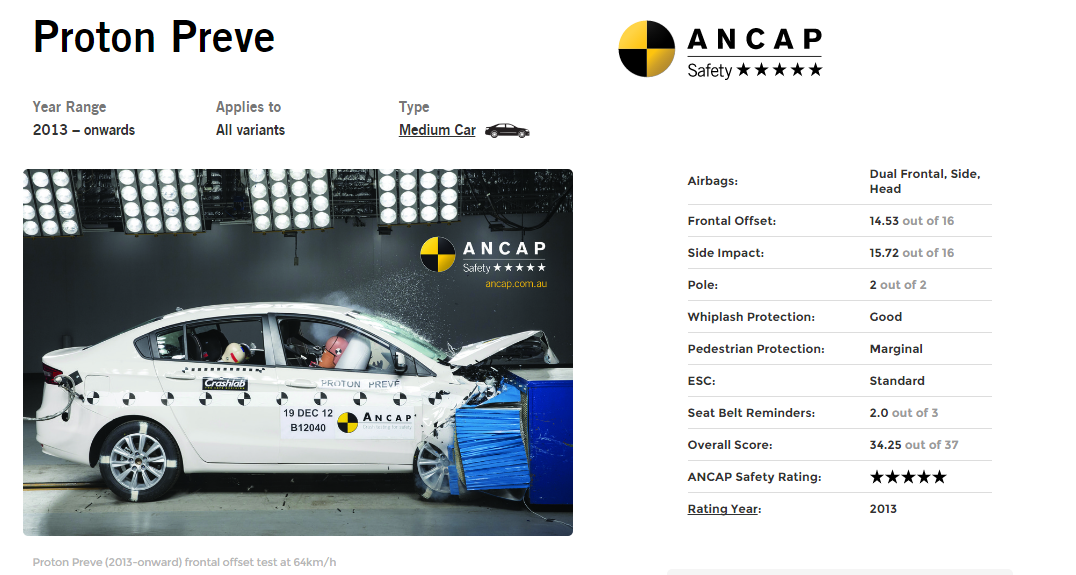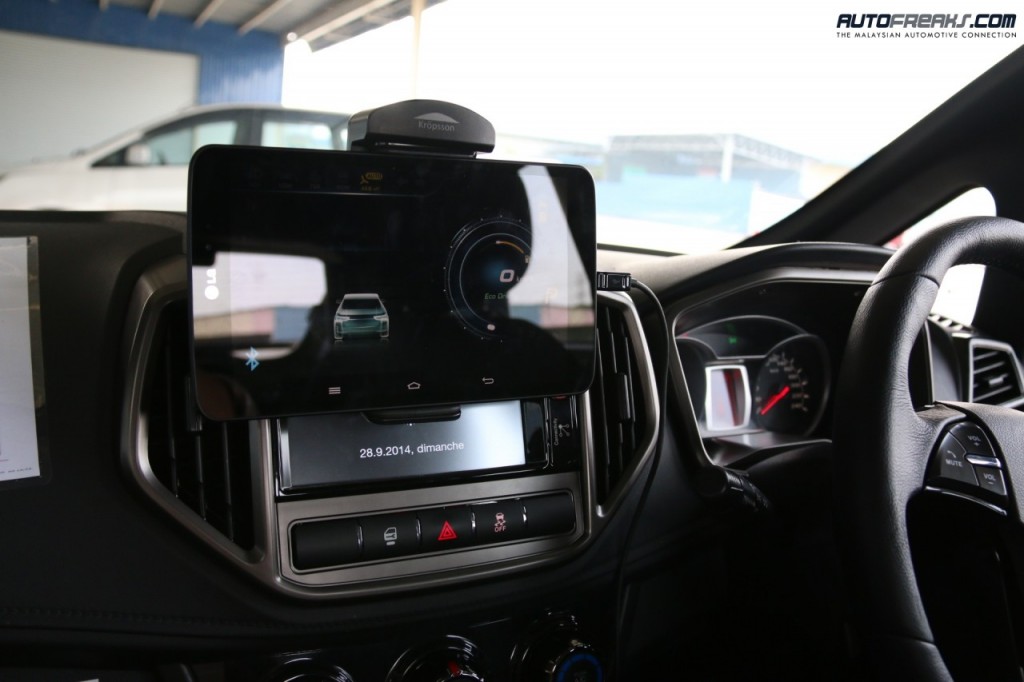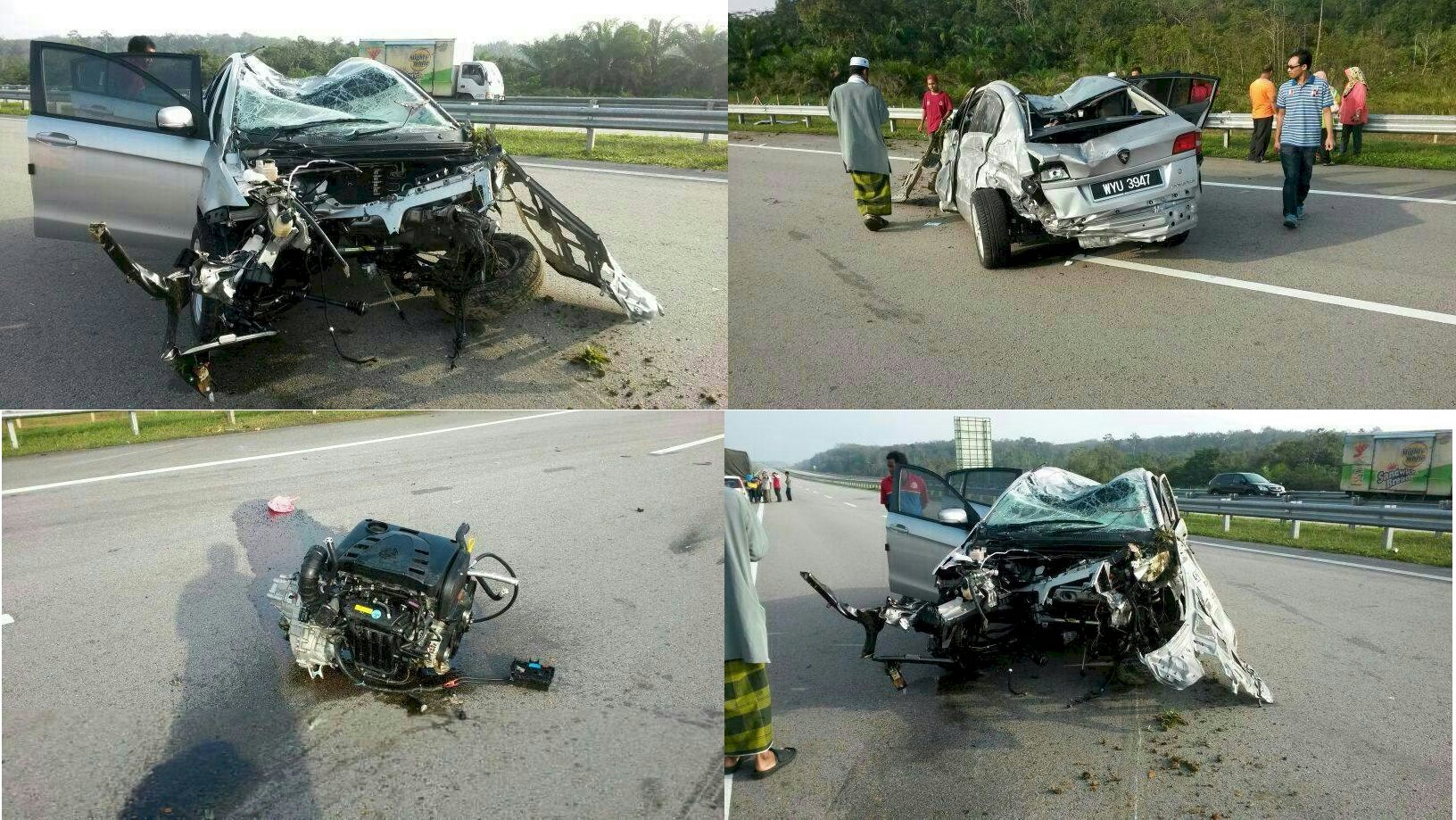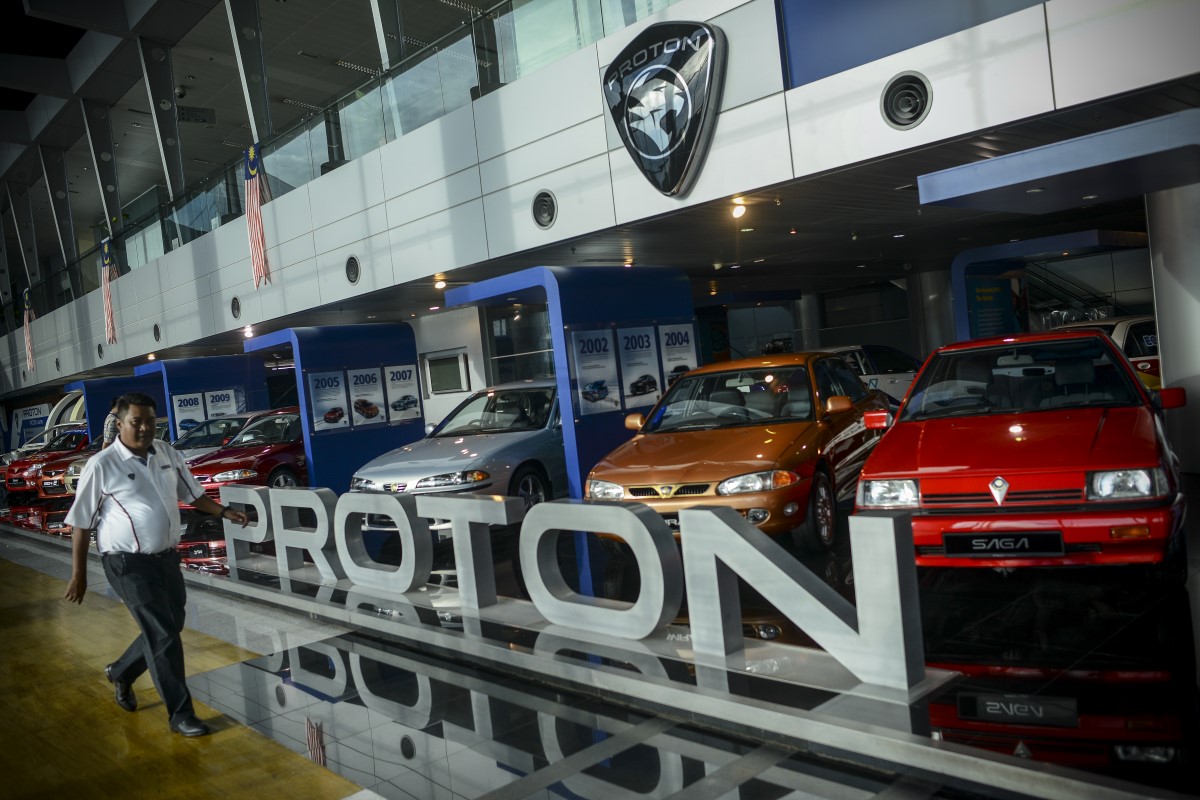What Proton Is Doing To Improve The Safety Of Their Cars
Safety is always their first priority.
Us Malaysians are no strangers to road accidents and the frequency in which they occur here is no laughing matter
According to the Malaysian Institute of Road Safety Research (MIROS), 2014 saw a slight decrease from 2013's statistics but was still a particularly bad year. It clocked a whopping 476,196 in road crashes, out of which 19,704 resulted in death or injury.
While a huge part of the responsibility for those numbers are certainly on us as drivers, it's nice to see that some vehicle manufacturers have taken it upon themselves to improve their products in an effort to better protect us. Local brand, Proton is a prime example of this.
Okay yes, they have been under fire for safety-related issues recently. But it's incidents like these that drive them to keep moving forward and work on improving themselves.
So what exactly have they been doing to achieve this?
Well for one, they've been implementing improved safety features in their cars. The International Trade and Industry Ministry (MITI) has said that the newer Proton models like the Prevé, Suprima S and Iriz feature the same advanced safety technology that is usually found in premium imported cars
This includes the following:
- the use of hot-press-formed (HPF) parts and ultra high-strength steel in constructing the body and frame
- Antilock Braking Systems (ABS)
- Electronic Brake Force Distribution (EBD)
- Brake Assist
- Electronic Stability Control
- Whiplash protection headrests
- Six airbags a.k.a curtain airbags (dual frontal, side chest and side head airbags)
- Isofix mounts for child seats
- Traction control
- Five three-point seat belts and seat belt reminders
At the official launch event of the Proton Iriz in September 2014, a half-cut model was displayed to highlight its safety features.
Image via autofreaks.comThey're also making sure that their cars adhere to high standards of safety regulations i.e. the United Nation (UN)'s ongoing implementation of regulations for new Vehicle Type Approvals (VTA)
What this means is that there are a list of criteria covering every single vehicle component that must be met to exact specifications before being approved for production and exporting. It's basically a guarantee that the car in question will meet specified performance standards.
There are currently a total of 134 UN regulations under the World Forum for Harmonisation of Vehicle Regulations (WP29) and the aim is to incorporate a total of 126 into Malaysian law by 2020.
Proton chief technical officer Abdul Rashid Musa has emphasized that Proton will be focusing on meeting these regulations across the board for all their models.
Note: These regulations are only applicable if said component is present on a particular model. For instance, a car may not necessarily need to have headlamp washers or a spare tyre to be type-approved in Malaysia, but if a proposed car model includes those elements, they must meet the relevant standards.
Besides that, various Proton models have managed to achieve good results in internationally recognized crash tests and safety assessments
It is the duty of various worldwide region-specific New Car Assessment Program (NCAP) to perform these tests on all car models sold in their respective region. The two NCAP's relevant to Malaysia are the Australasian New Car Assessment Program (ANCAP) and the New Car Assessment Program for Southeast Asian Countries (ASEAN NCAP).
Post-testing, each car is given a star ranking level from 1-5 that indicate the level of safety a vehicle provides for occupants and pedestrians in the event of a crash, as well as its ability - through technology - to avoid a crash. The higher the number of stars, the more safe the car is; you have twice the chance of being killed or seriously injured in a 3 star ANCAP safety rated car compared to a 5 star ANCAP safety rated car. To get 5 stars, a vehicle must perform to the highest level across all crash tests and assessments.
The Proton Prevé, Suprima S (with the exception of the ESC-less Suprima S Standard) and Iriz are all five-star ASEAN NCAP cars across their range. The Prevé and Suprima S are particularly commendable for also getting a five-star rating from ANCAP.
Watch the Prevé's ANCAP crash test from back in 2013 below and read more about it here.
A vital element in ensuring vehicle safety is continuous research and development into advanced safety related technology so if you were at the Alami Proton carnival in September 2014, you would have seen an Iriz prototype fitted with an LG Electronics Advanced Drive Assistance System (ADAS) stereo camera on display
With just this one addition, the following advanced safety features are made possible:
- Autonomous Emergency Braking
- Forward Collision Warning
- Lane Departure Warning
-Traffic Sign Recognition
- Adaptive Cruise Control
- High Beam Assist
- Cross Traffic Assist
There has been no word yet on if or when exactly the ADAS camera will be made standard across all ranges and models. But the fact that Proton is making efforts towards this goal is a good first step.
But what happens when the public loses faith in the brand due to real-life incidents? In cases like this, addressing the public's safety concerns via detailed case study explanations is crucial
Last year, an incident that quickly went viral on social media saw many expressing their shock over how badly a Prevé was damaged after a road accident. In particular, many were concerned about the almost completely caved-in roof and the engine's detachment from the car. Proton was quick to respond to reassure the public and also addressed this issue through a poster at their sales carnival.
Turns out that the engine detachment is by design. In the event of a heavy frontal collision (as in this case) or any other high-impact accidents, the engine is MEANT to drop away from the body to avoid being pushed back into the passenger cell. This protects the driver and front passenger from any resulting injuries.
As for the the caved-in roof, it in no way means that the Prevé has a weak body frame. Proton stated that the damage to the roof was caused because the car had rolled over during the accident. The tensile strength of the car can be seen in the post-accident photos (shown above) where we can clearly see that it's structure (made of HDF parts) remained mostly intact. The doors also unlocked automatically upon impact and could even be opened completely without any difficulty.
And above all, the fact that Proton is spearheading initiatives that attempt to improve safety for their existing customers is definitely much appreciated
Their currently ongoing 'Product Improvement Initiative' is a voluntary program in which you can submit your Proton car for inspection. If necessary, Proton will replace any parts in your car that are damaged or not up to safety standards. Both the inspection and parts replacement are completely free.
Have a look here for more information on this initiative and to sign up for it.
We consider a lot of things before deciding on which car to purchase but more often than not we forget an extremely important factor: how good the car's safety features are
So whether you're just out shopping for a new ride or finally buying yourself your first car with your own money, make sure to do extensive research into the safety features of the car you're considering. And don't be afraid to ask the salespeople any questions you may have, that's what they're there for.

